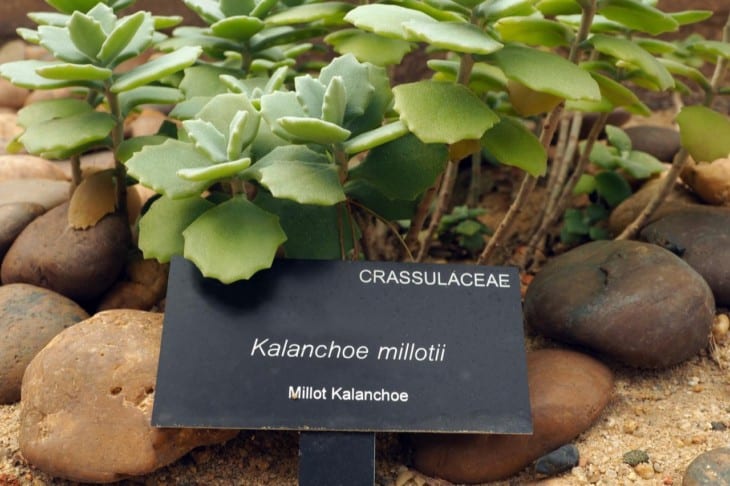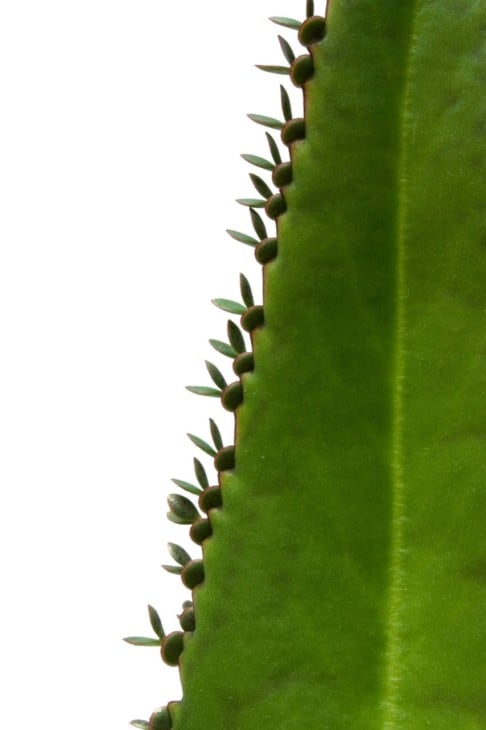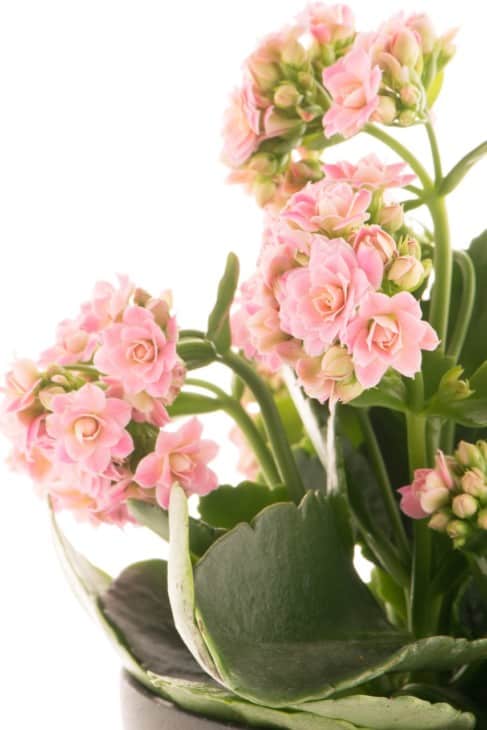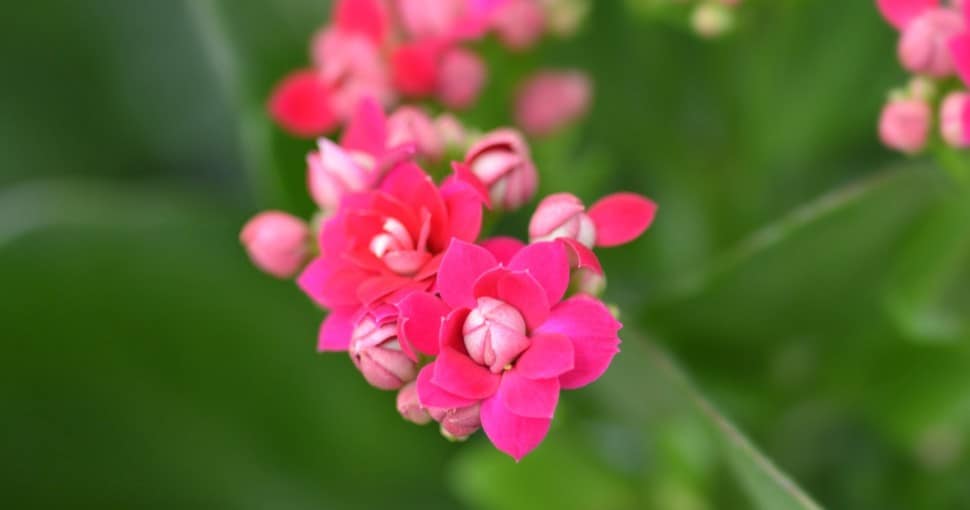Kalanchoe is a plant genus containing more than 120 succulent plant species with astonishing health benefits. It is loved as the popular ornamental Christmas plant with bright red, orange, or yellow flowers. This plant improves the indoor microclimate and has a vast range of medicinal properties.
Contents
Kalanchoe (Bryophyllum) pinnatum is a Madagascan plant also called Miracle leaf. Medicinal benefits noted for this plant include anti-allergic, antibacterial, antifungal, anti-diabetic, and antioxidant properties. It is used in treating kidney stones, cancer, ulcers, asthma, infections, and wounds.
A plant used for many ailments, air-cleaning, and an anti-insect remedy, can only be described as remarkable. It is called ‘katakataka’ in the Philippines, which means astonishing. Let us look at some of the amazing uses and benefits of Kalanchoe.
Medicinal And Health Benefits Of Kalanchoe
Kalanchoe plants are used in traditional herbal medicine worldwide to treat various conditions. Herbal medicines can be very effective and produce fewer problematic side effects than synthetic medicines.
Kalanchoe Leaves As An External Treatment
Fresh or heated Kalanchoe leaves can be pulped and applied to wounds, cuts, and scars. The leaves can be chewed raw as a sore throat remedy. It is recommended to take a small bite and wait for an hour in case of any adverse effects.
Kalanchoe infusions can also be added to shampoos or creams to benefit the hair and skin. Macerated leaves and leaf juice can be applied to treat the following health issues:
- Bedsores
- Boils
- Bruises
- Burns
- Chickenpox
- Eye and ear conditions
- Hair and scalp treatments
- Headaches and migraines
- Gynecological problems
- Insect bites, snake bites, itches, and rashes
- Skin ulcers and abscesses
- Sprains
- Wounds and cuts
- To stop bleeding
- Warts and corns

Kalanchoe Leaf Medicines Taken Internally
An infusion, tincture, or tea of Kalanchoe leaves can be drunk for various medical problems. Kalanchoe infusions can also be added to shampoos or creams to benefit the hair and skin. Below are some of the diseases and issues targeted by these methods.
- Anti-parasite treatments
- Asthma and sinus infections
- Blood purification and detoxing
- Cancer (lymphoma) and tumors
- Colds, coughs, and fevers
- Constipation and piles
- Diabetes and Weight management
- Diarrhea, intestinal and, digestion issues
- Fungal infections
- Glaucoma and sore eyes
- Headaches and migraines
- Increasing immunity
- Increases elasticity of blood vessels
- Menstrual disorders
- Rheumatoid arthritis and joint pain
- Kidney stones
- Laryngitis and tonsillitis
- Lymphatic disorders
- Neuro-sedative and muscle relaxant
- Osteochondrosis
- Reduces cholesterol
- Skin Problems
- Sleeping remedy
- Teeth and gum inflammation
- Trophic ulcers
- Tuberculosis
- Urinary tract infections
- Varicose veins
Kalanchoe Plants Used As A Cancer Treatment
Clinical research found a group of chemicals known as bufadienolides in the leaves of various Kalanchoe species. These compounds act against bacteria, cancers, tumors and are comparable to cardiac glycosides used for heart conditions.
Bufadienolides compounds slow the growth and even cause the death of cancerous cells. Research on these anti-tumor activities is ongoing.

The Active Ingredients In Kalanchoe Plants
There are various compounds, vitamins, and minerals in the leaves of the Kalanchoe plants that make it live up to the name Life-Leaf. Here are some of the active compounds that explain Kalanchoe’s many significant benefits.
- Alkaloids
- Triterpenes
- Bufadienolides
- Glycosides
- Flavonoids
- Steroids
- Lipids
- Tannins
- polysaccharides
- Minerals like iron, calcium, manganese, copper, silicon, and aluminum
- Organic acids like oxalic, citric, syringic, and malic acid
- Riboflavin, Thiamine, and Niacin
- Vitamin B and C
Other Benefits And Uses Of Kalanchoe Plants
Scientists are researching the genetics of Kalanchoe plants to better understand Biofuel Crop Farming. It is a very drought-resistant plant that requires little maintenance. Its ability to capture carbon dioxide at night when it is cooler makes it much more water-efficient than many other agricultural plants.
Sustainable agriculture researchers are very interested in plants like Kalanchoe that can grow in infertile desert soil and genetically enhance biofuel crops.
Mother of Millions is another name for the Kalanchoe plant. This name refers to the growth of baby plants on their wavy leaf margins. Kalanchoe is easy to propagate and can be grown inside or outside in many countries. Kalanchoe plants are easy to find and sold at most nurseries and supermarkets.
Kalanchoe is an attractive and decorative houseplant with multi-colored flowers that last for ten weeks or more. Beautiful plants have a therapeutic effect on people and reduce stress and fatigue.

Medicinal Tea From The Kalanchoe Plant
Kalanchoe tea is brewed from fresh or dried leaves. Always harvest from mature plants that are healthy and juicy. Wash and gently dry the leaves, then wrap in a textile bag and store in the vegetable box of the refrigerator for a week. This helps the bio-stimulants to intensify.
- Add three Kalanchoe leaves to one cup of filtered, boiling water.
- Simmer for 3 minutes.
- Let it stand for another 3 minutes.
- Strain out the leaves.
- Add honey if you prefer.
- Drink moderate amounts and not more than 3 cups per day.
Alcoholic Tinctures From Kalanchoe Plants
Alcoholic tinctures boost the beneficial properties of plants. These are very useful for wounds that do not want to heal. Remedies prepared in alcohol have a longer shelf life and can be stored in a dark place for up to a year.
- Chop up the washed, dried, and refrigerated leaves.
- In a glass container, mix 2 tablespoons of this with 6,7 oz of vodka.
- Close tightly and keep in a dark place for 10 days.
- Shake the bottle daily.
- Sieve the finished ointment through a piece of double gauze.
- Drink only 1 tablespoon of tincture per day or less.
- Do not ingest if you suffer from an ulcer, as the alcohol could irritate your stomach lining.
Kalanchoe Plants Can Help You To Sleep Better
Kalanchoe can be described as a night-time oxygenator that promotes better sleep.
This plant absorbs carbon dioxide at night and boosts oxygen availability indoors. This makes it an excellent plant to decorate your bedroom with.
Ready-made Kalanchoe Remedies
Various medicines and ointments made with Kalanchoe leaves are available at specialist pharmacies and health shops. Look out for ‘Leaf of life’ products.
Kalanchoe Plants Have Air-Cleaning Benefits
Most plants can naturally clean and humidify the air. Kalanchoe plants are especially suited for this job. It is a hardy plant that likes growing and flowering indoors where the air quality impacts our health.
The volatile organic compounds that are harmful to us are broken down by Kalanchoe plants and utilized for growth. Inhalation of pollutants can cause asthma, cancer, heart and lung problems. Plants and the soil they grow in purge the air of toxins and chemicals present in carpets, plastics, and household cleaning materials.
NASA compiled a list of houseplants in 1989 that was found to filter out toxins and impurities from the air. The plants with the highest scores were the Areca palm and the Rubber plant. Kalanchoe blossfeldiana, commonly known as Flaming Katy, is also on this list. The recommended number of potted plants indoors is 2 or 3 per 100 square feet.
Is Kalanchoe Toxic To Humans?
Kalanchoe plants or leaf sap is not toxic to humans. Although medicinal preparations are safe to use for most people, they should not be drunk every day for more than a month at a time. Kalanchoe tinctures should first be tested on a strip of inner arm skin. If no irritation occurs, then it is safe to use.
People with the following conditions should not drink Kalanchoe tinctures in alcohol:
- Diabetes
- Hepatitis
- Acute kidney or liver conditions
- Rheumatism
- Low blood pressure
- Heart diseases
- Breastfeeding women
- Be aware that Kalanchoe teas and tinctures might be harmful to children under four years of age.
Is Kalanchoe Toxic to Animals?
Kalanchoe plants absolutely pose life-threatening dangers to many animals. This plant has active compounds containing cardiac glycosides that affect the heart. Kalanchoe plants hold neurotoxins in their leaves to protect against damage by plant-eating animals. It is very poisonous to livestock.
Is Kalanchoe Toxic to Pets?
Kalanchoe is highly toxic to cats, dogs, and birds. Take your animal to the vet immediately as this poisoning can be deadly. Early symptoms of Kalanchoe poisoning are :
- Abnormal, increased, or decreased heart rate
- Drooling
- Diarrhea
- Stomach pain
- Dilated pupils
- Vomiting
- Lethargy and weakness
- Loss of appetite
- Tremors and seizures
Conclusion
Kalanchoe can only be described as a miracle plant. It provides natural and cost-effective remedies to countless medical conditions. It improves indoor air quality and brings splashes of joyous color to the interiors of homes and offices. The benefits contained in their ordinary-looking fleshy leaves are simply remarkable.







